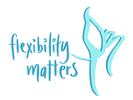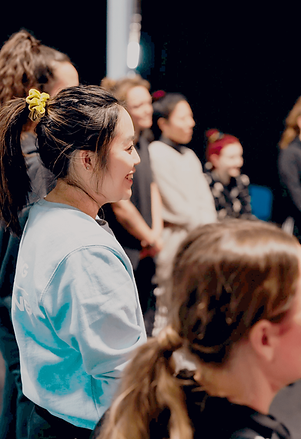How Your Eyes Can Enhance Your Movement
- Clarice Liu
- Nov 27, 2024
- 3 min read
Updated: Dec 19, 2024
Podcast interview with James McCambridge
James McCambridge is an online movement coach based in London, with a background in working with Irish national gymnasts and professional circus artists!

Have you ever considered the connection between your eyes and your physical capabilities?
In this episode of the Growth Through Movement podcast, hosts Marie and Beth chat with James McCambridge, a movement coach with a fascinating perspective.
James, with a background in gymnastics and circus arts, now delves into the science of eye movement, exploring how seemingly small details can significantly impact our physical performance.
James' journey: From Big Tricks to Tiny Details
James' journey began with a love for big, acrobatic movements. However, over time, his interest shifted towards the intricate details that underpin these impressive feats. He became fascinated by the role of the brain and nervous system in movement, particularly how our senses influence our physical capabilities.
The Unexpected Role of Vision
One of the key areas of focus is visual training. There is a surprising link between eye movements and our ability to learn and perform skills. Did you know that simply looking in a certain direction can influence your body's posture and coordination?
Try this simple test: focus on quickly moving your eyes from side to side while keeping your head still.
You might feel a tightening sensation in your suboccipital muscles at the back of your head.
This reaction demonstrates how eye movements can trigger chain reactions in our muscles, potentially impacting our conscious movement.
How might it affect us as athletes:
Gymnasts often struggle with balance beam landings when their eyes focus on reaching for the beam rather than extending their bodies.
The national gymnastics team can struggle due to angled lights interfering with their visual training.
Putting it into Practice
So, how can you incorporate visual training into your own movement practice?
Start by identifying how your eyes naturally move during a specific exercise: Are they working in a way that benefits the movement, or do they create a startle response? By breaking down the skill and analyzing your eye movements, you can identify areas for improvement.
Beyond Vision: Unconscious Balance Training
Vision is a huge part of training, but it is also important to look beyond that.

Unconscious balance training is another key component. Our vestibular system, located in our inner ear, plays a vital role in our sense of balance. When this system isn't adequately stimulated, it can lead to issues with maintaining balance, especially when closing your eyes.
Exercises like handstands with closed eyes can help train your vestibular system and improve your overall balance.
The Neuroband: A Tool for Integrated Training
To support those interested in exploring visual and balance training, James has created the Neuroband: a tool designed to train these systems in an integrated manner. More info here: https://www.rewirend.com/neuroband
The Neuroband comes with a 15-minute workout that focuses on moving your head and eyes in various directions. This training can be used as a starting point to assess your current eye-movement coordination and can be integrated into your existing movement practice.
Summary:
The conversation with James highlights the importance of a holistic approach to movement. While we often focus on the physical aspects of exercise, our visual senses play a crucial role in optimizing our movement capabilities. By incorporating visual and balance training into your routine, you can unlock hidden potential and refine your skills. Remember, as James emphasizes, growth through movement is about unlocking different ways of thinking and being by exploring the full potential of your body.
Want to learn more?
Visit James McCambridge's website or follow him on Instagram for more information on visual and balance training resources. And don't forget to subscribe to the Growth Through Movement Podcast for more insightful conversations about movement and its impact on our lives.

Our blogs and articles are not designed to replace medical advice. If you have an injury, we recommend seeing a qualified health professional. We offer both in-person assessments and online consultations!



.png)





Comments